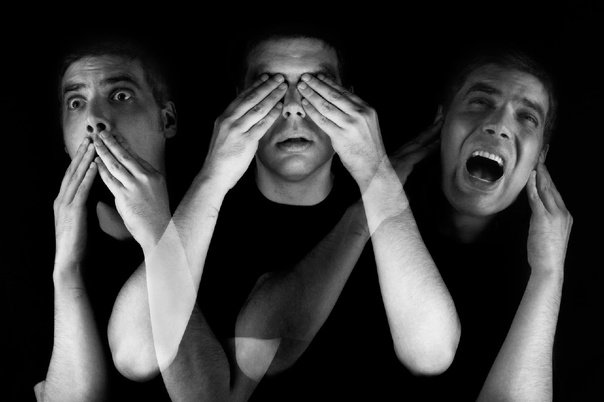Panic attacks are more common than you might think. Imagine sitting at your desk or walking in the park, and suddenly, an overwhelming sense of fear and dread overtakes you. Your heart races, your chest tightens, and you feel like you’re about to lose control. Panic attacks can strike anyone at any time, and their effects can ripple through all aspects of daily life. But what exactly are they, and how can understanding them help those affected?

In today’s fast-paced world, panic attacks have become more prevalent. With the increasing pressure of work, social obligations, and personal issues, many people are struggling to keep anxiety at bay. Panic attacks, unfortunately, are often misunderstood, leading to stigma and isolation for those who experience them. That’s why it’s essential to have a clearer understanding of what panic attacks are, what causes them, and how they can affect daily life.
What is a Panic Attack?
A panic attack is an intense, sudden feeling of fear or anxiety that is overwhelming and often paralyzing. These episodes can happen out of the blue, even when there’s no real danger present.
Symptoms of a Panic Attack
The symptoms of a panic attack are both physical and emotional. They often include a racing heart, difficulty breathing, sweating, trembling, dizziness, and a feeling of being detached from reality. Emotionally, the person might feel a sense of impending doom, fear of losing control, or fear of dying. These symptoms are severe and can mimic other serious health issues, like heart attacks.
How Panic Attacks Differ from Anxiety
While anxiety is a prolonged feeling of worry or fear, a panic attack is an acute episode that comes on suddenly and peaks within minutes. Panic attacks are more intense but shorter-lived than general anxiety. Understanding this difference is crucial, as it can help in identifying whether what you’re experiencing is anxiety or a panic attack.
Types of Panic Attacks
Panic attacks come in two forms: expected and unexpected. Expected panic attacks are triggered by specific situations or stimuli, such as public speaking or flying. Unexpected panic attacks occur without warning or clear triggers, making them particularly frightening.
Causes of Panic Attacks
What causes panic attacks? The reasons vary from person to person, but common causes include a mix of genetic, environmental, and psychological factors.
Genetic Factors
Panic attacks can run in families, suggesting a genetic link. If your parents or close relatives suffer from panic attacks or anxiety disorders, you may be more prone to them as well.
Environmental Triggers
Stressful events, such as losing a job, going through a breakup, or experiencing a trauma, can lead to the onset of panic attacks. Even less dramatic changes, like moving to a new city or starting a new job, can act as triggers.
Psychological Factors
People with certain psychological profiles are more likely to suffer from panic attacks. For instance, those with low self-esteem, perfectionists, or individuals who are overly critical of themselves are more prone to panic.
The Physical Impact of Panic Attacks
Panic attacks don’t just affect your mind; they also take a toll on your body.
Effects on the Cardiovascular System
During a panic attack, your heart rate spikes, mimicking the effects of a heart attack. While it’s not dangerous for most people, frequent panic attacks can put unnecessary stress on the cardiovascular system, especially for those with pre-existing conditions.
Impact on the Respiratory System
Hyperventilation is a common symptom during a panic attack. The person breathes rapidly, leading to lightheadedness and shortness of breath. Over time, this can create a feeling of breathlessness, even when not having a panic attack.
Gastrointestinal Distress
The gut-brain connection is powerful, and during a panic attack, the digestive system often reacts negatively. Some people experience nausea, cramping, or diarrhea, making the experience even more uncomfortable.
The Mental and Emotional Toll
Beyond the physical symptoms, the mental and emotional toll of panic attacks is significant.
Increased Anxiety and Fear
A panic attack is an alarming experience, and the fear of having another attack can lead to heightened anxiety. This creates a vicious cycle, where the anticipation of an attack makes it more likely to happen.
Impact on Self-Esteem and Confidence
Living in fear of a panic attack can erode self-esteem. People might avoid social situations, work opportunities, or even daily tasks out of fear of an attack, leading to a loss of confidence in themselves and their abilities.
The Fear of Having Another Attack
The most significant emotional toll is the constant fear of the next panic attack. This fear can lead to avoidance behavior, where individuals start to limit their activities to avoid potential triggers, isolating themselves from the outside world.
How Panic Attacks Affect Daily Life
Panic attacks can seep into every aspect of daily life, from personal relationships to professional success.
Social Life and Relationships
People who experience panic attacks may find it difficult to maintain a social life. They might avoid gatherings, cancel plans, or pull away from friends and family to avoid triggering an attack.
Professional Life and Productivity
Work can become incredibly challenging for individuals dealing with panic attacks. The constant fear or unpredictability of an attack can lead to decreased productivity, missed deadlines, and even loss of employment.
Personal Routines and Habits
Daily routines, such as grocery shopping, driving, or exercising, can become daunting tasks. The fear of having a panic attack in public or while alone can lead to avoidance of these basic activities, impacting quality of life.
Coping with Panic Attacks
Fortunately, there are ways to manage and cope with panic attacks.
Recognizing Early Signs
Recognizing the early signs of a panic attack can be the first
step in preventing it from escalating. These might include increased heart rate, tightness in the chest, or a feeling of unease.
Grounding Techniques
Grounding techniques, such as focusing on physical sensations or repeating calming phrases, can help redirect the mind during a panic attack. Holding onto a cold object or focusing on the texture of something nearby can help anchor the mind in the present moment.
Breathing Exercises
Deep breathing exercises are one of the most effective ways to calm the body during a panic attack. Slow, deliberate breaths help reduce hyperventilation and ease the heart rate, allowing the body to regain control.
Treatment Options for Panic Attacks
There are various treatments available to manage panic attacks and reduce their frequency.
Cognitive Behavioral Therapy (CBT)
CBT is a popular treatment for panic attacks, focusing on identifying and changing negative thought patterns that contribute to the fear of panic attacks. This therapy helps patients confront their fears in a controlled manner, gradually reducing their impact.
Medication Options
In some cases, medication is prescribed to manage panic attacks. Anti-anxiety medications, antidepressants, and beta-blockers are commonly used to treat the symptoms of panic attacks and prevent their occurrence.
Lifestyle Changes and Self-care
Incorporating self-care into your daily routine can also help manage panic attacks. Regular exercise, a balanced diet, adequate sleep, and reducing caffeine and alcohol consumption are all important factors in maintaining emotional balance.
Long-Term Effects of Panic Attacks
If left untreated, panic attacks can have long-term effects on a person’s physical and mental well-being.
Development of Panic Disorder
Panic attacks, if recurrent, can develop into panic disorder. Panic disorder is characterized by frequent and unexpected panic attacks, coupled with a persistent fear of having another one. This condition requires professional treatment to manage.
Long-Term Physical Health Consequences
Chronic stress from panic attacks can lead to long-term health issues, including high blood pressure, heart disease, and gastrointestinal disorders. The body’s constant state of fight-or-flight during panic attacks takes a physical toll over time.
Impact on Overall Mental Health
Beyond panic disorder, recurrent panic attacks can lead to other mental health issues, such as depression or generalized anxiety disorder (GAD). Living with the fear of panic attacks can also lead to social isolation and loneliness.
The Role of Support Systems
Having a strong support system is essential for those coping with panic attacks.
How Friends and Family Can Help
Friends and family can offer invaluable support by being understanding and patient. Sometimes, just having someone who listens and reassures the individual during or after an attack can make a huge difference.
Professional Support Options
Seeking help from mental health professionals, such as therapists or counselors, can be instrumental in learning to manage panic attacks. They can offer coping strategies, provide therapeutic interventions, and offer emotional support.
Support Groups for Panic Attack Sufferers
Support groups offer a safe space for individuals dealing with panic attacks to share their experiences and learn from others. Knowing you’re not alone in your struggle can be empowering and comforting.
Myths and Misconceptions about Panic Attacks
There are many myths surrounding panic attacks, which can contribute to misunderstanding and stigma.
Panic Attacks Are Just Overreactions
One common myth is that panic attacks are just an overreaction to minor stress. In reality, panic attacks are serious mental health issues and not something the individual can just “get over.”
Panic Attacks Are Not Dangerous
While panic attacks themselves are not life-threatening, they can cause significant distress and lead to long-term health problems if not managed properly.
People Can Always Control Their Panic Attacks
Contrary to popular belief, people cannot always control when or where a panic attack will occur. They can, however, learn coping mechanisms to manage the attacks when they happen.
The Connection Between Panic Attacks and Other Mental Health Disorders
Panic attacks are often linked to other mental health disorders.
Anxiety Disorders
People who suffer from anxiety disorders, such as generalized anxiety disorder or social anxiety, are more likely to experience panic attacks. The heightened state of fear and worry can trigger these intense episodes.
Depression
There is a strong correlation between panic attacks and depression. Those who experience frequent panic attacks may develop feelings of hopelessness, leading to depression.
Post-Traumatic Stress Disorder (PTSD)
Panic attacks can also be a symptom of PTSD. Individuals who have experienced trauma may develop panic attacks when exposed to triggers that remind them of the traumatic event.
Prevention Strategies for Panic Attacks
While it’s not always possible to prevent panic attacks, there are strategies that can help reduce their frequency.
Identifying and Avoiding Triggers
Knowing what triggers your panic attacks is crucial in preventing them. For some, this might mean avoiding caffeine or high-stress situations, while others might need to confront their fears in therapy.
Stress Management Techniques
Learning stress management techniques, such as meditation, yoga, or journaling, can help keep anxiety levels in check and reduce the likelihood of a panic attack.
Building Resilience and Mental Health Practices
Building mental resilience through positive thinking, self-compassion, and regular mental health check-ins can help reduce the overall impact of panic attacks on your life.
Living a Full Life with Panic Attacks
Living with panic attacks doesn’t mean you can’t have a fulfilling life. With the right strategies, it’s possible to thrive.
Strategies for Maintaining a Social Life
It’s important to maintain social connections, even if panic attacks make it difficult. Start small, such as meeting one friend for coffee, and gradually increase your social activities.
Balancing Work and Mental Health
Finding a balance between work and mental health is essential. If your job is stressful, consider discussing accommodations with your employer, such as flexible hours or working remotely.
Embracing Self-Care and Wellness
Prioritize self-care as a non-negotiable part of your life. Whether it’s taking regular breaks, practicing mindfulness, or engaging in hobbies, taking care of your mental health should always be at the top of your list.
Conclusion
Panic attacks are not just moments of intense fear; they are complex and often misunderstood experiences that can significantly affect daily life. Understanding the causes, symptoms, and coping mechanisms for panic attacks is essential for those affected and those who support them. By raising awareness and offering empathy, we can help reduce the stigma surrounding panic attacks and offer support to those who need it. Remember, living with panic attacks doesn’t mean you’re alone or that you can’t live a full, rewarding life.
FAQs
Can panic attacks be cured?
While panic attacks may not have a definitive cure, they can be managed with therapy, medication, and lifestyle changes.
What are the early signs of a panic attack?
Early signs include a racing heart, chest tightness, dizziness, and a sense of impending doom.
How long do panic attacks typically last?
Most panic attacks last between 5 to 20 minutes, though they can feel much longer.
Are panic attacks related to heart problems?
While panic attacks can mimic heart attack symptoms, they are not directly related to heart problems. However, it’s essential to consult a doctor if you’re unsure.
What should you do if someone is having a panic attack?
Remain calm, reassure them that they are safe, and guide them through deep breathing exercises to help them regain control.




